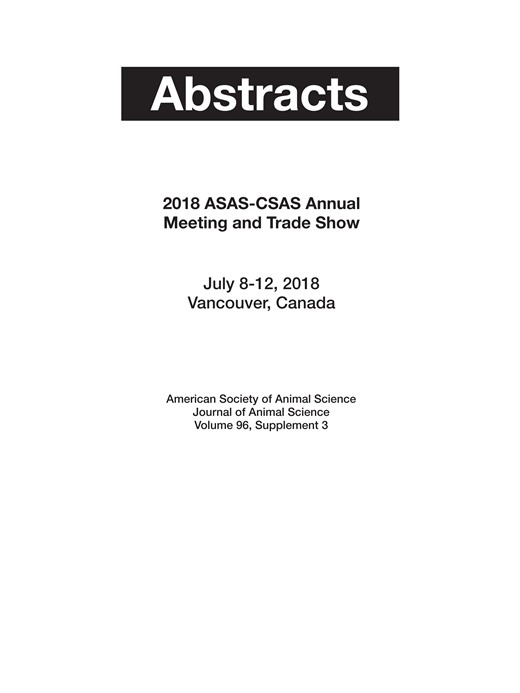-
Views
-
Cite
Cite
I Ogunade, H Schweickart, PSXIV-20 Effect of dietary monensin on rumen fluid metabolomic profile of beef cattle., Journal of Animal Science, Volume 96, Issue suppl_3, December 2018, Page 441, https://doi.org/10.1093/jas/sky404.965
Close - Share Icon Share
Abstract
Rumen fluid metabolomic analysis using ultra-performance liquid chromatography/time-of-flight mass spectrometry and univariate statistical analysis were used to evaluate the effect of dietary monensin on the rumen fluid metabolites of beef steers. Eight rumen-fistulated Holstein steers (500 – 550 kg) were used in the study for 32 d (14-d adaptation period to diet and 18-d treatment period). On day 0, steers were weighed 16 hours after feed withdrawal, stratified and blocked by initial body weight, and randomly assigned to 1 of 2 treatments: no supplementation (CON) and monensin supplementation (MON). Steers were housed in individual pens and had ad libitum access to water and red clover/alfalfa hay mixture. Corn-soybean meal-based supplement containing no or 200 mg of monensin were fed at 1 kg/steer daily. Rumen fluid was collected on the last day of the experiment. Identification of the metabolites was obtained using MS-DIAL version 2.80. Identified metabolites were merged and imported into Metaboanalyst 4.0 for univariate analysis and partial least square-discriminant analysis to identify the differential metabolites. The chemical structures of the differential metabolites were identified according to online databases such as the Human Metabolome Database, Metlin, and the Mass Bank using accurate masses and MS/MS fragments. Overall, 243 metabolites were identified. Univariate analysis, including fold change analysis and t-test, identified 12 differential metabolites which were greater (P < 0.05) in MON compared to CON. Pathway enrichment analysis showed that the differential metabolites were primarily involved in biosynthesis of arginine, proline, glycine, serine, threonine, and tryptophan and secondary metabolites. The results of this study agreed with protein-sparing effects of MON in the rumen which may probably be due to sparing of glucogenic amino acids from gluconeogenesis or to direct effects on rumen proteolysis and deamination.





